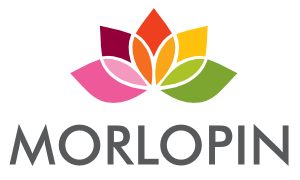Methods for the application of industrial paint
Industrial paint is used to protect and decorate metal surfaces and in a variety of applications. From building construction to industrial equipment manufacturing. And there are several methods of industrial paint application, each with its own advantages and disadvantages. At Morlopin, your paint factory in Madrid, we produce paints and coatings with professionalism. To offer you the best quality. This ensures a professional application and finish.
6 Industrial paint application methods
- Brush and roller: The most common for applying industrial paint. It is easy to use and does not require specialized equipment. Although it is a little slower than other methods and may leave marks on the painted surface.
- Air spray: Consists of a sprayer that uses air to atomize the paint into a fine spray. Perfect for industrial painting jobs.
- Spraying: This method uses a compressed air gun to spray the paint on the surface. It is much faster than brush and roller, and is suitable for large areas. However, it requires a higher level of skill and experience to avoid splashes and drips.
- Paint brush: The brush of all life. It may be the case that it is the method you really need to do and finish a job. There is a wide variety of sizes and styles of this typology with which you can adjust perfectly to what you need. It may require good technique.
- Electrostatic painting: In this case an electric charge is used to attract the paint to the surface. It is very efficient and produces a uniform finish without splashing or dripping. However, it requires specialized equipment and is more expensive than other methods.
- Immersion painting: The part is completely immersed in a paint bath. It is suitable for large and complicated shaped parts. However, it is very expensive and requires a large amount of space and specialized equipment.
What should be taken into account when applying paints?
Industrial paint application methods vary from the use of brushes and rollers to immersion in a paint bath. Each has its advantages and disadvantages, and the choice of the appropriate method will depend on the characteristics of the surface to be painted and the project in question. It is important to note that each of these methods requires skills and experience to apply correctly.
The paint manufacturing process requires extreme rigor to achieve a quality product. The manufacture of paints involves the use of several ingredients:
- Pigments
- Additives
- Binders
- Resins
- Solvents
Each of them has a specific function in the final product. Pigments provide the colors to the paints, solvents are responsible for dissolving the product, additives control certain properties of the paint such as leveling and splattering, and resins are the main element of the paints.The main characteristics of the paints, such as resistance and adhesion, depend on them.
Paint factories are the place where all these substances that give life to our spaces emerge. Transforming spaces such as our home or office. The manufacturers are experts in the area of painting. The process that is carried out to create paint is fascinating because of the great variety of textures and colors it offers.
Related searches: industrial painting techniques, industrial painting procedure, industrial painting course pdf, industrial liquid paint, importance of paint in industry, paint for industrial machines, industrial painter what is.
Industrial painting, paint factory, paint manufacturing process

